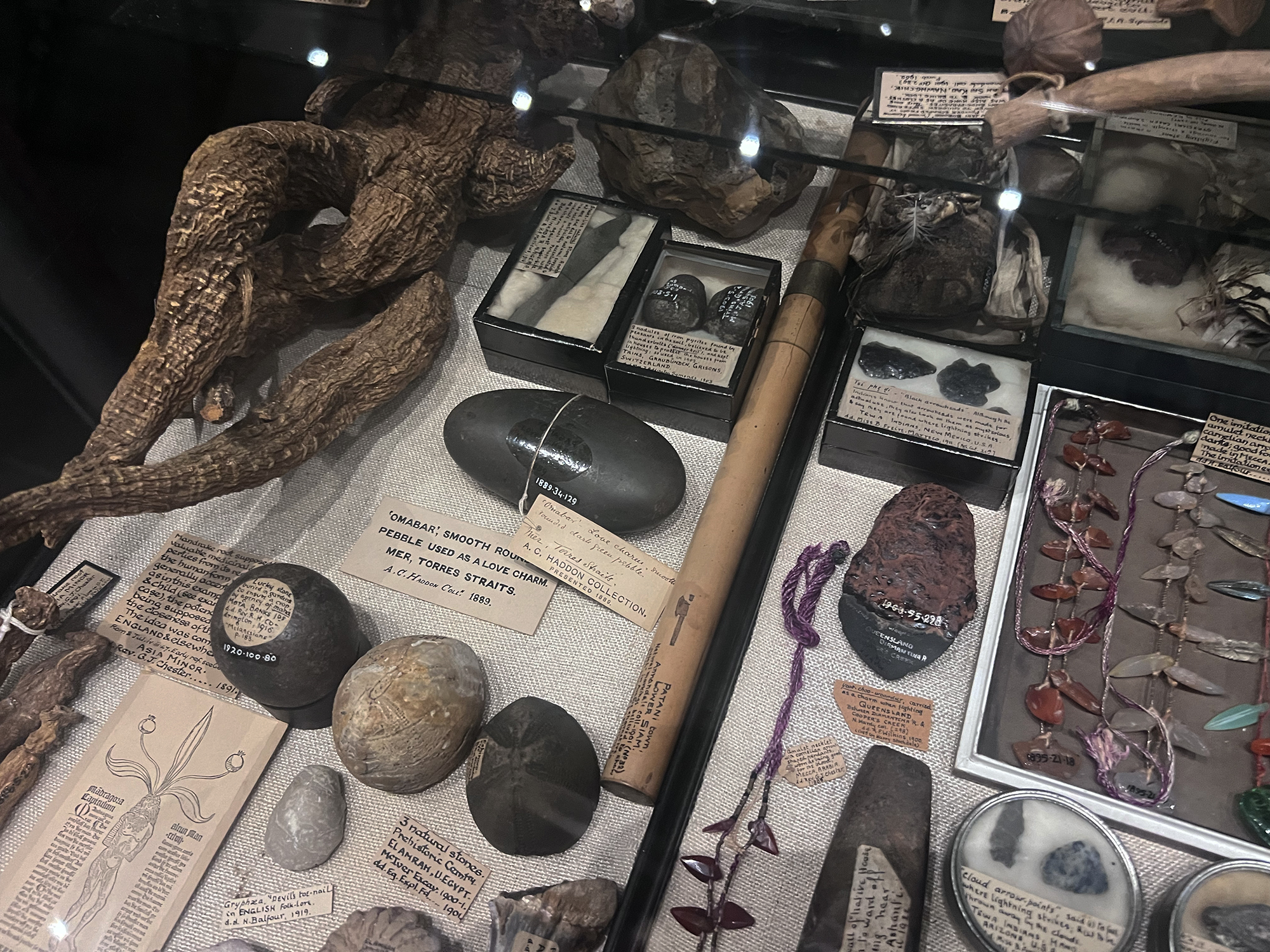Omabar
Smooth rounded pebble used as a love charm, Torres Straits, Australia
PRM 1889.34.129 Case C.61.A
Have you ever picked up a pebble on a beach and admired it for its pleasing shape and coolness when held in the hand? The natural form of this pebble may have similarly inspired a Torres Strait Islander to collect it. It was later acquired by anthropologist Alfred Haddon during his fieldwork in the Torres Strait islands at the end of the nineteenth century. He described it as an Omabar or ‘love charm’ that was carried by men for its magical potency. A similar but more elongated pebble with the same function was also collected by Haddon and is now is housed in the British Museum.
Recognised for his pioneering work in the Torres Strait, Haddon’s research helped shape the early formation of anthropology as an academic discipline. His comprehensive approach to fieldwork and his interactions with Torres Strait Islanders resulted in a large collection of objects, drawings, field photographs and sound and film recordings. Most of that collection is housed in the Museum of Anthropology and Archaeology at the University of Cambridge where Haddon was appointed as the first lecturer in Ethnology in 1900.
This object featured in the video artwork 'Presence and Absence' by Marina Abramović.
It is one of seven objects you can read about that was part of the exhibition trail on the ground floor of the museum.

